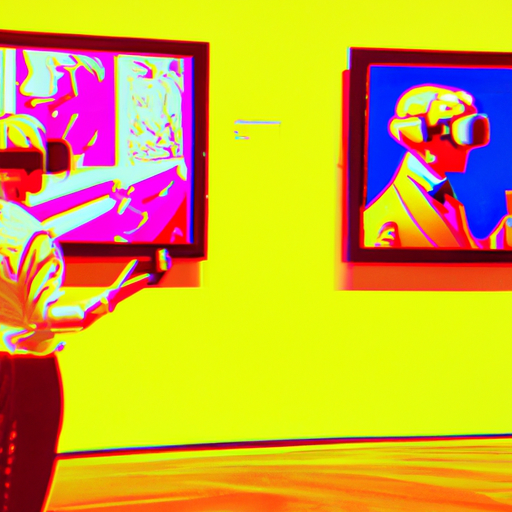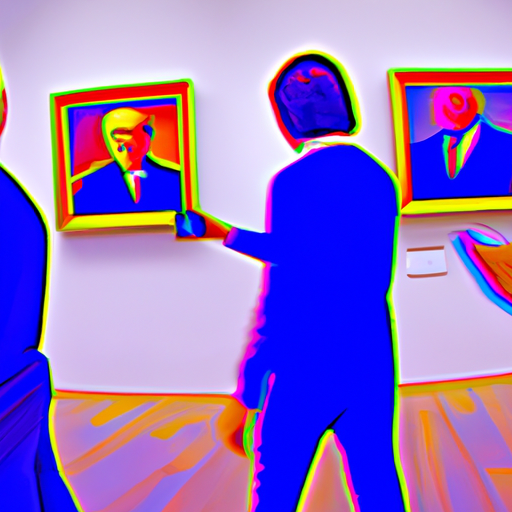
-
Table of Contents
- The Future of Illustration in Virtual Reality Museums
- The Power of Virtual Reality in Museums
- The Role of Illustration in Virtual Reality Museums
- Enhancing the Visitor Experience with Illustration in VR Museums
- Case Studies: Illustration in Action
- 1. The British Museum
- 2. The Louvre Museum
- 3. The Smithsonian National Museum of Natural History
- The Future of Illustration in VR Museums
- Summary
The Future of Illustration in Virtual Reality Museums

Virtual reality (VR) technology has revolutionized various industries, from gaming to healthcare. One area that is experiencing significant growth and innovation is the use of VR in museums. Traditional museums have long relied on illustrations to enhance the visitor experience and provide a deeper understanding of the exhibits. With the advent of VR, the future of illustration in museums is set to undergo a remarkable transformation. This article explores the potential of VR in museums and how it will shape the future of illustration.
The Power of Virtual Reality in Museums
Virtual reality has the ability to transport visitors to different times, places, and even fictional worlds. It offers a level of immersion and interactivity that traditional museums cannot match. By putting on a VR headset, visitors can explore ancient civilizations, walk through famous art galleries, or even interact with extinct animals. This technology has the potential to revolutionize the way museums engage with their audiences.
VR museums provide a unique opportunity for visitors to experience exhibits in a more dynamic and engaging way. Instead of simply looking at static illustrations, visitors can now step into a virtual world and interact with the content. For example, instead of viewing a painting on a wall, visitors can walk around it, zoom in to see intricate details, and even learn about the artist’s techniques through interactive tutorials.
The Role of Illustration in Virtual Reality Museums
Illustration has always played a crucial role in museums, helping to convey complex ideas and concepts to visitors. In the context of VR museums, illustration takes on a new dimension. It becomes an integral part of the virtual environment, guiding visitors through the exhibits and providing contextual information.
One of the key advantages of illustration in VR museums is its ability to bridge the gap between the real and virtual worlds. By incorporating illustrations into the virtual environment, museums can create a seamless experience that blends the physical and digital realms. For example, an illustration of a historical figure can be placed next to a virtual representation of the figure, providing visitors with additional information and context.
Enhancing the Visitor Experience with Illustration in VR Museums
Illustration in VR museums has the potential to enhance the visitor experience in several ways:
- Storytelling: Illustrations can be used to tell compelling stories within the virtual environment. By combining visual elements with narration or text, museums can create immersive narratives that captivate visitors.
- Education: Illustrations can be used to explain complex concepts or provide historical context. For example, in a VR museum about space exploration, illustrations can help visitors understand the different stages of a rocket launch or the formation of galaxies.
- Interactivity: Illustrations can be interactive, allowing visitors to manipulate objects or explore different perspectives. This interactivity adds a new level of engagement and encourages visitors to actively participate in the learning process.
- Accessibility: Illustrations can make exhibits more accessible to a wider audience. For example, by incorporating sign language illustrations, VR museums can cater to visitors with hearing impairments.
Case Studies: Illustration in Action
Several museums have already embraced the potential of illustration in VR environments. Let’s explore a few notable case studies:
1. The British Museum
The British Museum partnered with a VR development company to create a virtual tour of their Egyptian collection. The tour features detailed illustrations of ancient artifacts, providing visitors with a deeper understanding of their historical significance. Visitors can interact with the illustrations, zoom in to see intricate details, and even listen to audio guides that explain the context of each artifact.
2. The Louvre Museum
The Louvre Museum in Paris collaborated with a team of illustrators to create a VR experience that allows visitors to explore the museum’s iconic artworks. The illustrations seamlessly blend with the virtual environment, providing visitors with additional information and insights about the artworks. Visitors can also interact with the illustrations to learn about the techniques used by the artists.
3. The Smithsonian National Museum of Natural History
The Smithsonian National Museum of Natural History in the United States has incorporated illustrations into their VR exhibits to enhance the educational experience. For example, in their dinosaur exhibit, visitors can interact with illustrations that show the anatomy and behavior of different dinosaur species. This interactive approach helps visitors gain a deeper understanding of the subject matter.
The Future of Illustration in VR Museums
The future of illustration in VR museums is bright and full of possibilities. As technology continues to advance, we can expect to see even more innovative uses of illustration in virtual environments. Here are some potential developments:
- Real-time Illustration: With advancements in real-time rendering, illustrations in VR museums can become more dynamic and responsive. For example, illustrations can adapt to visitors’ movements or change based on their preferences.
- Collaborative Illustration: VR museums can enable visitors to contribute to the illustrations themselves. This collaborative approach can foster a sense of ownership and creativity among visitors.
- Personalized Illustration: VR museums can use visitor data to create personalized illustrations tailored to each individual’s interests and preferences. This customization can enhance the visitor experience and make it more memorable.
Summary
Virtual reality has the potential to revolutionize the museum experience, and illustration plays a crucial role in this transformation. Illustration in VR museums enhances the visitor experience by providing storytelling, education, interactivity, and accessibility. Case studies from museums like the British Museum, the Louvre, and the Smithsonian National Museum of Natural History demonstrate the power of illustration in virtual environments. As technology continues to advance, the future of illustration in VR museums holds exciting possibilities, including real-time illustration, collaborative illustration, and personalized illustration. The integration of illustration and VR technology will undoubtedly shape the future of museums, making them more immersive, engaging, and accessible to a wider audience.
